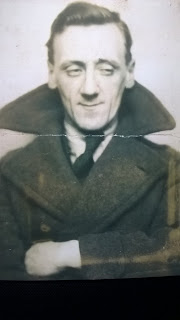Film Reviews 2017 - #1 Belleville Rendez-Vous
1.
Belleville
Rendez-Vous (2003)
We have
become accustomed to astonishing animated movies. The work of Pixar, in particular, has shown
us how a million blades of grass can shimmer in the sunshine, how that sunshine
can be vividly reflected on the perfectly rendered chrome of a speeding car,
how that car (or rat or toy or fish or personality trait) can be a fully
developed character in its own right.
Pixar has shown us, too, that a film ostensibly intended for children
can have not merely the occasional comedic moment to keep the adults
interested, it can have entirely parallel narratives for its respective
audiences. (Indeed, as A S
Fell has suggested, Pixar invert the
traditional relationship between the narratives: a Disney film, he argues, can
be identified as an animated film for children with a sub-text aimed at adults;
whereas a Pixar movie is in fact an animated film for adults, with a sub-text
for children).
We have
perhaps paid less attention to that genre of animation which eschews the
children altogether (or which treats them as incidental) and which (for similar
reasons) also rejects the use of computerised imagery. Think of Spirited
Away or Persopolis; or Ernest
and Ethel, the Raymond Briggs film broadcast over Christmas, which comprises a
tender line-drawing biography of his parents (and reminds us of his 1986 film, When the Wind Blows, which animates the
prelude to and aftermath of a nuclear attack); while Anomalisa is the Academy-award nominated stop-motion movie from
Charlie Kaufman (Being John Malkovich,
Eternal Sunshine of the Spotless Mind et al) reckoned by The Guardian to
have been the best film – of any kind – of 2016.
Despite the
limitless ability of modern CGI to embed hyper-real imagery within movies
ostensibly using ‘real’ people and scenery – and thereby create entirely
fictitious visual worlds (viz. Avatar,
Gravity, Lord of the Rings, Potter etc) - animated movies seem to provide
their creators with opportunities to re-interpret or re-present reality in a
more comprehensive way. It is as if,
freed from any convention that includes a regulation human, the film-maker can
actually look even more closely at ‘the human condition’. This is somewhat uncanny; and it is perhaps
no accident that such films, in being uncanny, are also frequently unsettling.
This is
undoubtedly the territory occupied by Belleville Rendez-Vous. Set in a world of distended buildings,
rectilinear baddies and impossibly tall ships, of extraordinary jazz, obsessive
cycling and criminal sommeliers, Belleville tells the tale of a Tour-de-France
cyclist who is kidnapped by the mafia for use in a gambling den and eventually
rescued by his grandmother.
Or does
it? Perhaps Belleville tells the tale of
a doting grandmother, who lovingly supports her grandson’s passion for cycling
and who rescues him from baddies when he is kidnapped and taken to the big
city.
Or does
it? Perhaps Belleville tells the tale of
three singing sisters who, despite falling a long way from their music hall
heyday (they now live in a tenement block used mainly by drug-dealers and
prostitutes and survive on a diet exclusively of frogs, gathered each evening
through the use of dynamite in the marshes) still concoct sublime music each
evening and use their musical wits to help the grandmother and outwit the bad
guys. (The film’s original title was
‘The Triplets of Belleville’.)
Or perhaps
the film is actually about a faithful and very fat dog, without whom the
cyclist would not have matured from boyhood, without whom the grandmother could
not have rescued the boy, without whom the singers could not have helped the
grandmother?
It doesn’t
matter. We watch the film and enter its
uncanny world, completely. The frogs
wander dazed from the explosions, the gangsters have noses red and swollen from
drinking too much wine, the cyclist has an upper body made of string and legs
that are massaged each day using an egg whisk.
The triplets cackle like witches while making music that is divine; the
dog is so fat it nearly collapses each time it hurtles down the stairs and can
be used as a spare tyre on the ‘broom van’ that collects the mad gibbering
cyclists unable to complete the agonising climb up Mont Ventoux. The grandmother has a club foot which she
uses, at the end of the curtain-closing chase scene, to fling the chief baddie
from an impossibly high bridge to an explosive end in the chimney of a passing
ship.
What does it
all mean? Perhaps it doesn’t
matter. For 78 minutes we leave the
‘real’ world far behind and enter an alternative reality so thoroughly and
wonderfully and powerfully conceived that the experience is its own
reward. There are no analogies, no
metaphors, because they are not needed: it is sufficient in and of itself;
enough is enough, so why have more?
But there
is, even in that conclusion, a hint of what the film is ‘about’: how far is
enough? How far can you go? How far will
you go? How committed are you to the
thing that you love? Committed enough to
cycle the Tour de France? Committed
enough to use a pedalo to cross an ocean to save your grandson? To be used as a spare tyre? To live in penury
and eat nothing but frogs so that you can make music for the gods?
To make a
movie as strange and brilliant as Belleville Rendez-Vous? If that’s the question, then this film is a
wonderful answer.



Comments